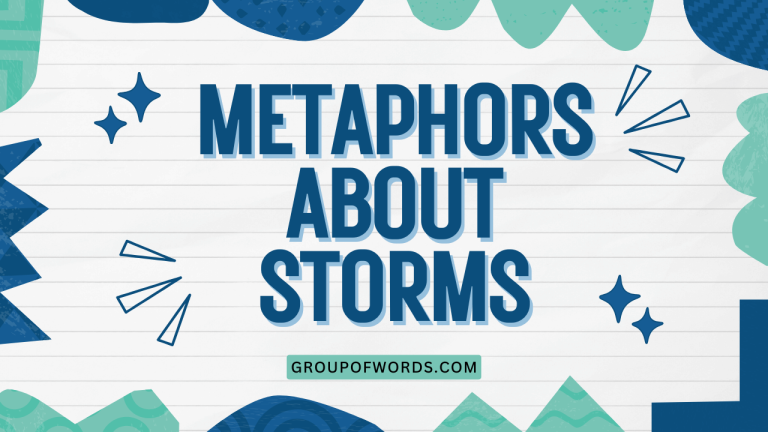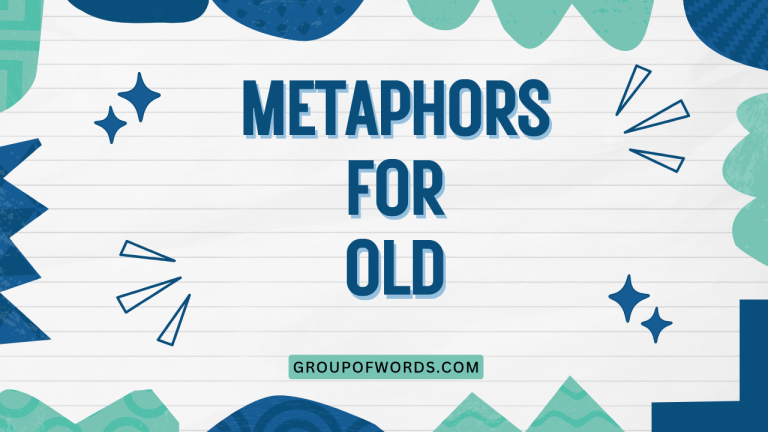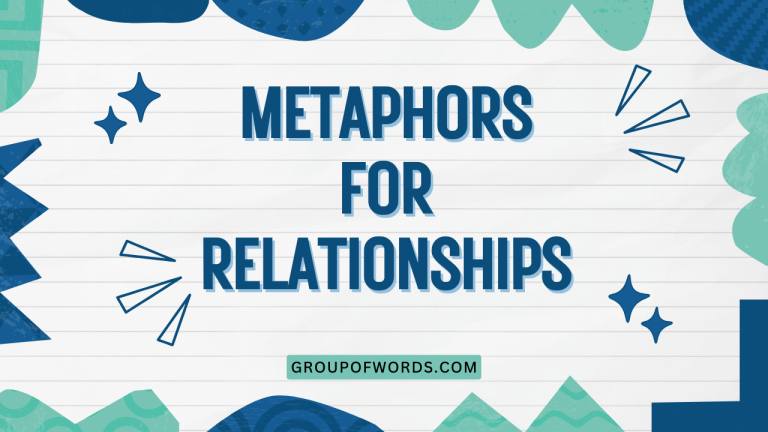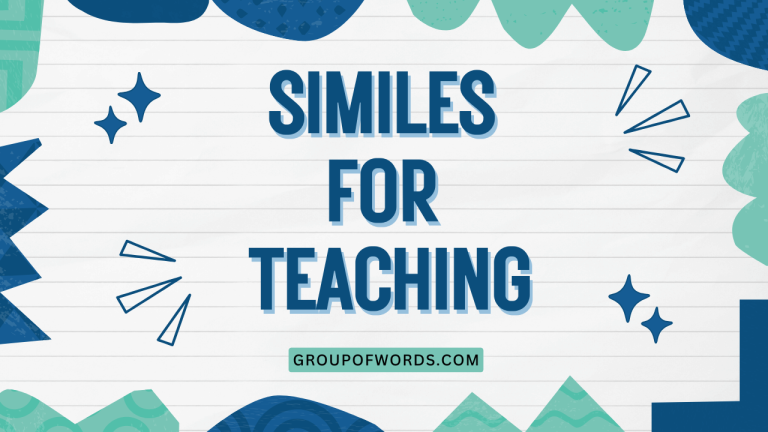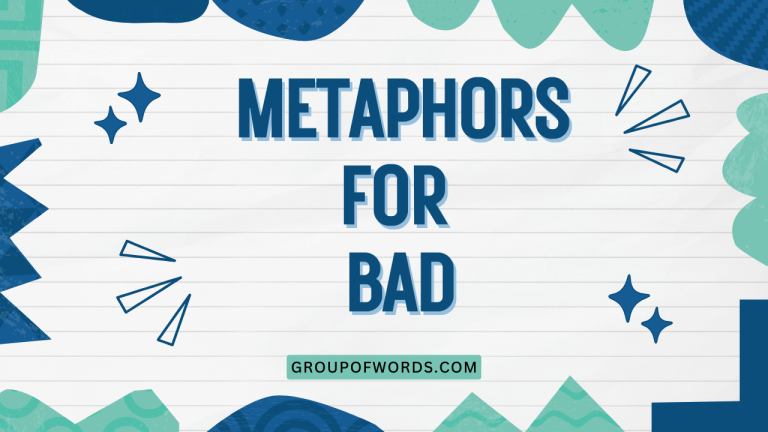Similes for Easy: A Comprehensive Guide to Expressing Simplicity
Similes are powerful tools in the English language, allowing us to paint vivid pictures and make complex ideas more relatable. When describing something as “easy,” similes can add nuance and creativity beyond the simple adjective.
This article delves into the world of similes for “easy,” exploring their definitions, structures, and various applications. Whether you’re an English language learner, a writer seeking to enrich your prose, or simply curious about the intricacies of language, this guide will provide you with a thorough understanding of how to effectively use similes to express ease and simplicity.
Understanding similes for “easy” not only enhances your descriptive abilities but also deepens your comprehension of figurative language. This article offers numerous examples and practical exercises to help you master this aspect of English grammar.
By the end, you’ll be equipped to use similes for “easy” with confidence and precision, adding flair and clarity to your communication.
Table of Contents
- Introduction
- Definition of Simile
- Structural Breakdown of Similes
- Types of Similes for “Easy”
- Examples of Similes for “Easy”
- Usage Rules for Similes
- Common Mistakes with Similes
- Practice Exercises
- Advanced Topics: Nuances and Context
- Frequently Asked Questions
- Conclusion
Definition of Simile
A simile is a figure of speech that compares two unlike things using the words “like” or “as.” Its primary function is to create a vivid image or convey a specific quality by drawing a parallel between the subject and something more familiar or evocative. Similes enrich language by making descriptions more engaging and understandable.
Unlike metaphors, which directly equate two things, similes acknowledge the comparison explicitly.
In the context of describing something as “easy,” similes help us go beyond the literal meaning of the word. They allow us to convey the *degree* of ease, the *manner* in which something is easy, or the *feeling* associated with its easiness.
For example, saying something is “as easy as pie” evokes a sense of effortless simplicity that the word “easy” alone might not fully capture. Similes provide a more colorful and nuanced way to express the concept of ease.
Structural Breakdown of Similes
The basic structure of a simile is straightforward: Subject + Verb + “like” or “as” + Object of Comparison. The subject is the thing being described, and the object of comparison is what it’s being compared to.
The verb typically links the subject to the comparison. Understanding this structure is crucial for constructing effective and grammatically correct similes.
Let’s break down the structure with examples related to “easy”:
- Subject: The task
- Verb: was
- Comparison Word: as
- Object of Comparison: easy as ABC
- Complete Simile: The task was as easy as ABC.
Another example:
- Subject: Solving the puzzle
- Verb: felt
- Comparison Word: like
- Object of Comparison: taking candy from a baby
- Complete Simile: Solving the puzzle felt like taking candy from a baby.
The flexibility of similes allows for variations in sentence structure, but the core elements of subject, verb, comparison word, and object of comparison remain essential. The key is to ensure that the comparison is clear, relevant, and adds value to the description.
Types of Similes for “Easy”
Similes for “easy” can be categorized based on the aspect of ease they emphasize. Some highlight the simplicity of the task, while others focus on the lack of effort required or the straightforward nature of the process.
Here are some common types:
Simplicity-Focused Similes
These similes emphasize the uncomplicated nature of something. They often use comparisons to things that are inherently simple or easily understood.
Effortless-Focused Similes
These similes highlight the lack of effort required to accomplish something. They often compare the task to activities that require minimal exertion.
Straightforwardness-Focused Similes
These similes emphasize the clear and direct path to achieving a goal. They often compare the process to something linear and unambiguous.
Examples of Similes for “Easy”
This section provides a comprehensive list of similes for “easy,” categorized by the type of ease they emphasize. Each category includes numerous examples to illustrate the variety and versatility of these expressions.
Simplicity-Focused Similes Examples
The following table provides examples of similes that focus on the simplicity of a task or concept. These comparisons often evoke a sense of basic understanding and lack of complexity.
| Simile | Explanation |
|---|---|
| As easy as ABC | Implies the task is fundamental and straightforward, like learning the alphabet. |
| As easy as 1, 2, 3 | Similar to “as easy as ABC,” emphasizing a simple, sequential process. |
| As easy as pie | Suggests the task requires minimal effort and is easily accomplished. |
| As simple as a child’s drawing | Highlights the lack of complexity and sophisticated detail. |
| As clear as day | Indicates that something is obvious and easily understood. |
| As plain as the nose on your face | Emphasizes the obviousness and lack of subtlety. |
| As straightforward as a straight line | Highlights the direct and uncomplicated nature of the task. |
| As basic as breathing | Implies the task is natural and requires no conscious effort. |
| As easy as falling off a log | Suggests the task is so simple that it’s almost impossible to fail. |
| As easy as tying your shoes | Compares the task to a routine, everyday action. |
| As simple as adding two and two | Highlights the fundamental nature of the task. |
| As clear as a bell | Indicates that something is easily heard or understood. |
| As easy as blinking | Suggests the task is instantaneous and requires no effort. |
| As simple as black and white | Emphasizes the lack of ambiguity and clear distinction. |
| As easy as saying your name | Compares the task to something deeply ingrained and automatic. |
| As simple as a nursery rhyme | Highlights the uncomplicated and repetitive nature of the task. |
| As clear as crystal | Indicates that something is transparent and easily understood. |
| As easy as pushing a button | Suggests the task requires minimal action and is quickly completed. |
| As simple as baking a cake | Implies the task can be done following a set of simple rules. |
| As clear as mud (ironic) | This is an ironic simile, meaning it is NOT at all easy. |
Effortless-Focused Similes Examples
The following table provides examples of similes that focus on the lack of effort required to accomplish something. These comparisons often involve activities that are perceived as requiring minimal exertion or skill.
| Simile | Explanation |
|---|---|
| Like taking candy from a baby | Suggests the task is unfairly easy and requires no skill or effort. |
| Like shooting fish in a barrel | Implies the task is ridiculously easy and offers no challenge. |
| Like falling off a log | Suggests the task is so simple that it’s almost impossible to fail. |
| Like rolling off a chair | Highlights the lack of effort required and the almost inevitable outcome. |
| Like breathing air | Emphasizes the natural and effortless nature of the task. |
| Like winking your eye | Suggests the task is quick, simple, and requires no thought. |
| Like snapping your fingers | Implies the task is instantaneous and requires minimal action. |
| Like riding a bike | Suggests the skill is easily retained and requires little effort once learned. |
| Like water off a duck’s back | Highlights the ease with which something is handled or overcome. |
| Like watching paint dry | This is often used ironically, but can imply a lack of effort because nothing is happening. |
| Like milking a cow | If you know how to milk a cow, this task is simple and you can do it without much thought. |
| Like shelling peas | Imples a simple and repetitive motion. |
| Like buttering bread | Suggests a smooth process with little resistance. |
| Like turning on a light | Implies immediate and effortless activation. |
| Like flipping a switch | Similar to turning on a light, emphasizing ease and speed. |
| Like drifting downstream | Suggests effortless movement guided by external forces. |
| Like floating on a cloud | Highlights a sense of ease and freedom from effort. |
| Like coasting downhill | Implies effortless progress due to momentum. |
| Like watching clouds go by | Emphasizes the passive and effortless nature of the experience. |
| Like sitting on a park bench | Suggests relaxation and a lack of required activity. |
Straightforwardness-Focused Similes Examples
The following table provides examples of similes that emphasize the clear and direct path to achieving a goal. These comparisons often involve linear processes or unambiguous instructions.
| Simile | Explanation |
|---|---|
| As straightforward as a straight line | Highlights the direct and uncomplicated nature of the task. |
| As clear as a map | Suggests the path is well-defined and easy to follow. |
| As direct as an arrow | Implies a focused and unwavering approach. |
| As obvious as the sun in the sky | Emphasizes the undeniable and easily perceived nature of the goal. |
| As simple as following a recipe | Suggests the task can be easily accomplished by adhering to clear instructions. |
| As clear as instructions on the box | Highlights the comprehensibility and ease of understanding. |
| As predictable as sunrise | Implies a reliable and expected outcome. |
| As logical as A follows B | Emphasizes the clear and sequential relationship between steps. |
| As routine as brushing your teeth | Suggests the task is a regular and uncomplicated part of daily life. |
| As organized as a filing cabinet | Highlights the systematic and easily navigable nature of the process. |
| As planned as a blueprint | Implies a structured and well-defined approach. |
| As systematic as a computer program | Suggests a logical and step-by-step execution. |
| As linear as a timeline | Emphasizes the sequential and progressive nature of the task. |
| As structured as a building’s frame | Highlights the solid and well-organized foundation of the process. |
| As methodical as a scientist’s experiment | Suggests a careful and deliberate approach. |
| As certain as gravity | Implies an inevitable and predictable outcome. |
| As reliable as clockwork | Emphasizes the consistent and dependable nature of the process. |
| As regulated as a train schedule | Suggests a strict and predictable adherence to a plan. |
| As sure as eggs is eggs | Implies that something is a given and cannot be argued against. |
| As clear as a Google search | When you know what you are looking for, Google gives you exactly what you want. |
Usage Rules for Similes
While similes are creative expressions, there are rules to ensure their effective use. The most important rule is that the comparison should be relevant and understandable.
The two things being compared should share a common quality that makes the simile meaningful.
Relevance: The object of comparison should have a clear connection to the subject being described. A random or nonsensical comparison will confuse the reader rather than enlighten them. For example, saying “The task was as easy as quantum physics” would be ineffective because quantum physics is generally considered complex, not easy.
Clarity: The comparison should be easily understood by the intended audience. Avoid obscure references or overly complex concepts. The goal is to enhance understanding, not to create confusion. For instance, “The task was as easy as baking a cake” works well because most people have a general understanding of the cake-baking process.
Originality: While common similes like “as easy as pie” are acceptable, strive for originality to make your writing more engaging. A fresh and creative simile can capture the reader’s attention and leave a lasting impression. Consider using similes that are specific to the context or tailored to the subject matter.
Avoid Clichés: Overused similes, known as clichés, can make your writing sound uninspired. While they are easily understood, they lack impact and originality. Try to avoid clichés like “as easy as ABC” and instead, think of more creative and specific comparisons.
Common Mistakes with Similes
Even with a clear understanding of similes, certain mistakes are common. Recognizing these errors can help you avoid them and use similes more effectively.
Incorrect Comparison: This involves comparing two things that lack a relevant connection. This can confuse the reader and undermine the intended meaning.
Misusing “Like” and “As”: While “like” and “as” are both used in similes, they are not always interchangeable in other contexts. Ensure you are using them correctly within the simile structure.
Creating Confusing Imagery: The simile should create a clear and understandable image. Avoid comparisons that are vague, abstract, or open to multiple interpretations.
Overusing Similes: While similes can enhance writing, using too many can make it seem forced and unnatural. Use them judiciously to add emphasis and clarity where needed.
Here are some examples of common mistakes and their corrections:
| Incorrect | Correct | Explanation |
|---|---|---|
| The task was easy like a rock. | The task was as easy as pie. | “A rock” doesn’t convey easiness. “As easy as pie” is a common and understandable simile. |
| It was as easy the sun. | It was as easy as seeing the sun. | Missing the word SEEING makes the simile incomplete. |
| Solving the problem was like a cat. | Solving the problem was like taking candy from a baby. | “A cat” doesn’t relate to easiness. “Taking candy from a baby” is a relatable example of easiness. |
Practice Exercises
Test your understanding of similes for “easy” with these practice exercises. Each exercise presents a series of sentences where you need to complete the simile or identify the correct usage.
Exercise 1: Completing Similes
Complete the following sentences with appropriate similes for “easy.”
| Question | Answer |
|---|---|
| 1. The instructions were _______________. | as clear as day |
| 2. Learning to ride a bike is _______________. | like riding a bike |
| 3. For him, solving the puzzle was _______________. | like taking candy from a baby |
| 4. The test was _______________. | as easy as pie |
| 5. Understanding the concept is _______________. | as easy as ABC |
| 6. The process was _______________. | as straightforward as a straight line |
| 7. Completing the task was _______________. | like snapping your fingers |
| 8. The solution was _______________. | as plain as the nose on your face |
| 9. Getting started was _______________. | as easy as pushing a button |
| 10. Remembering the formula is _______________. | as easy as saying your name |
Exercise 2: Identifying Correct Similes
Choose the correct simile from the options provided to complete each sentence.
| Question | Options | Answer |
|---|---|---|
| 1. The game was _______________. | a) like a rock, b) as easy as ABC, c) like a cloud | b) as easy as ABC |
| 2. For her, the challenge was _______________. | a) like quantum physics, b) as clear as mud, c) like falling off a log | c) like falling off a log |
| 3. The explanation was _______________. | a) as easy as quantum physics, b) as clear as a bell, c) like a maze | b) as clear as a bell |
| 4. The task turned out to be _______________. | a) like climbing Mount Everest, b) as simple as adding two and two, c) like solving world hunger. | b) as simple as adding two and two |
| 5. Learning the new software was _______________. | a) like rocket science, b) as straightforward as a straight line, c) like deciphering ancient hieroglyphs. | b) as straightforward as a straight line |
| 6. The process of signing up was _______________. | a) as complicated as brain surgery, b) as simple as baking a cake, c) like navigating a labyrinth. | b) as simple as baking a cake |
| 7. The problem was _______________. | a) as obscure as the dark side of the moon, b) as plain as the nose on your face, c) like finding a needle in a haystack. | b) as plain as the nose on your face |
| 8. Getting the project approved was _______________. | a) like pulling teeth, b) as easy as pushing a button, c) as hard as cracking a diamond. | b) as easy as pushing a button |
| 9. The assignment was _______________. | a) as challenging as splitting the atom, b) as easy as saying your name, c) like solving the Riemann Hypothesis. | b) as easy as saying your name |
| 10. After practicing, the dance routine was _______________. | a) like walking on eggshells, b) as graceful as a swan, c) like riding a bike. | c) like riding a bike |
Advanced Topics: Nuances and Context
Beyond the basic rules, the effectiveness of similes depends on context and nuance. Consider the audience, the tone of the writing, and the specific aspect of “easy” you want to emphasize.
For instance, “like taking candy from a baby” can be perceived as insensitive, while “as easy as pie” is generally harmless.
Cultural Context: Some similes are culturally specific and may not be understood by everyone. Be mindful of your audience and choose comparisons that are universally relatable or explain any cultural references.
Irony and Sarcasm: Similes can be used ironically to convey the opposite of their literal meaning. For example, saying “The task was as easy as solving world hunger” implies that the task was, in fact, very difficult.
Combining Similes: For added emphasis, you can combine multiple similes in a single sentence or paragraph. However, use this technique sparingly to avoid overwhelming the reader.
Frequently Asked Questions
Here are some frequently asked questions about similes for “easy,” along with detailed answers to clarify any lingering doubts.
- What is the difference between a simile and a metaphor?
A simile compares two unlike things using “like” or “as,” while a metaphor directly equates them without using these words. For example, “The task was as easy as pie” (simile) versus “The task was a piece of cake” (metaphor).
- Can I use a simile to describe something difficult?
Yes, similes can be used ironically to describe something difficult. For example, “The task was as easy as solving world peace” implies that the task was very challenging.
- How can I make my similes more creative?
Think beyond common comparisons and consider specific details or unique qualities of the subject. Use vivid language and imagery to create a memorable and impactful simile.
- Is it okay to use clichés in similes?
While clichés are easily understood, they lack originality and can make your writing sound uninspired. It’s best to avoid them and strive for more creative comparisons.
- How many similes should I use in a piece of writing?
Use similes judiciously to add emphasis and clarity where needed. Overusing them can make your writing seem forced and unnatural. Let the context guide your decision.
- What if my simile is not understood by the reader?
Ensure that the comparison is clear, relevant, and easily understood by your target audience. Avoid obscure references or overly complex concepts. If necessary, provide additional context or explanation.
- Can a simile be too long or complex?
Yes, a simile should be concise and to the point. If it becomes too long or convoluted, it loses its impact and can confuse the reader. Keep it simple and focused.
- What are some other words besides “like” and “as” that can be used in similes?
While “like” and “as” are the most common, you can also use words such as “than,” “resembles,” or “similar to” to create comparisons, although the structure may need to be adjusted slightly.
Conclusion
Mastering similes for “easy” enhances your ability to express simplicity and effortlessness in a vivid and engaging way. By understanding the structure, types, and usage rules of similes, you can add depth and nuance to your writing and communication.
Remember to consider the relevance, clarity, and originality of your comparisons to create impactful and memorable expressions.
Continue practicing and experimenting with different similes to refine your skills. Pay attention to the context and audience, and don’t be afraid to get creative.
With consistent effort, you’ll be able to use similes for “easy” with confidence and precision, adding flair and clarity to your language.

